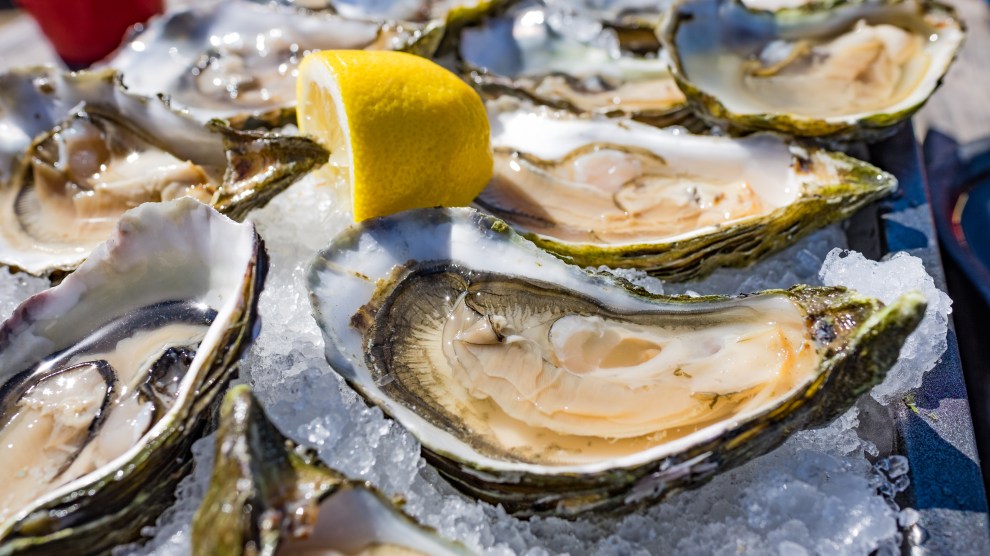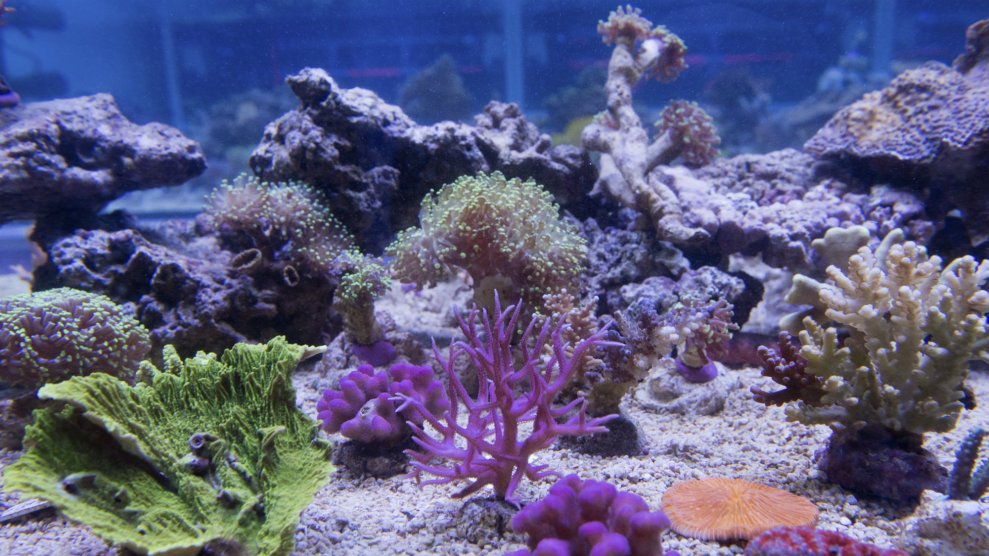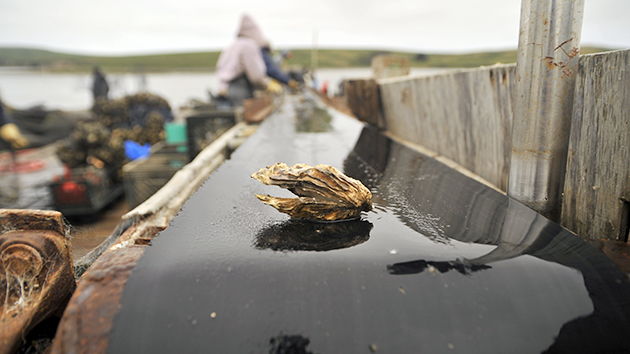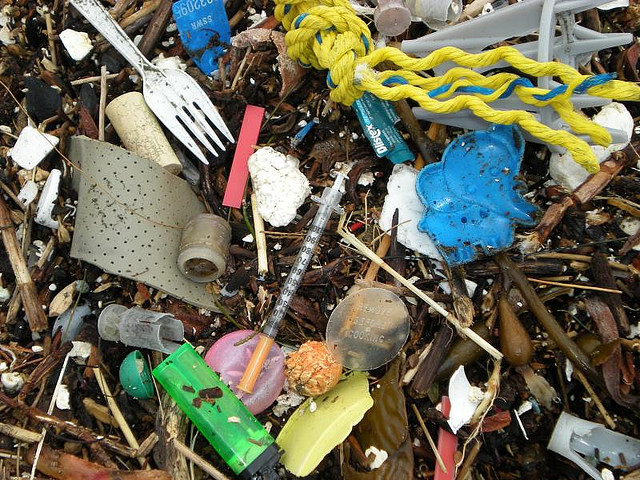
Paleontologist Stephen Durham seals a bag of oyster samples.Courtesy Stephen Durham/Florida DEP
This story was originally published by Atlas Obscura and is reproduced here as part of the Climate Desk collaboration.
As the tide slowly recedes out of Apalachicola Bay, a rugged swell of oysters breaks the surface. Paleontologist Greg Dietl gingerly navigates the uneven, slippery surface of exposed reefs. Dietl jokes that he’s “now in the oyster business,” but the curator of Cornell’s Paleontological Research Institution (PRI) in Ithaca, New York, has not come to harvest the living assemblage of eastern oysters (Crassostrea virginica) poking above the water. He’s here to sample the dead shells entombed below.
For the past few years, Dietl has collaborated with Florida’s Department of Environmental Protection (DEP) to collect tens of thousands of oyster fossils from reefs like this one. The work is about more than paleontology: These ancient shells are crucial to understanding the decline of modern oyster reefs throughout the Florida Panhandle, and to restoring this vital habitat.
The Florida Panhandle had long been an oyster paradise. Apalachicola Bay—which is one of the last places in the country where oystermen are still required to use wooden tongs to harvest wild oysters, rather than dredging—has been its epicenter. These salty waters once produced 90 percent of Florida’s oysters, which were slurped up by connoisseurs throughout the Southeast. Over the past century, however, overharvesting and suffocating sediment have caused many of the panhandle’s oyster reefs to vanish. The decline hastened in the 1960s with the influx of industrial waste along the coast. In 1971, the poor water quality led to an outbreak of disease that wiped out more than 90 percent of the region’s harvestable oysters. In 2020, Apalachicola Bay shuttered its once-vibrant oyster fishery for five years.
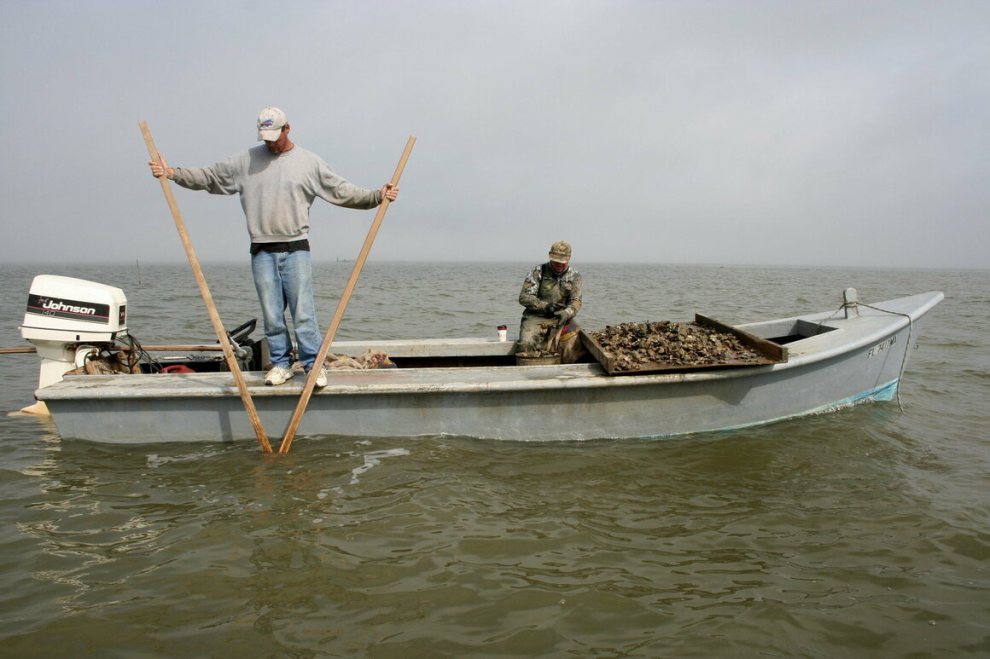
A fisherman oystering in Apalachicola Bay with traditional wooden tongs.
Stan Kirkland/CC BY-ND 2.0/FWC
The loss of oysters sent ripples throughout the entire coastal environment. Oysters are vital ecosystem engineers and top-notch water filters—a single adult oyster can filter up to 50 gallons of water in just 24 hours. Oyster reefs even buffer coastal areas against waves and storms. Due to their economic and ecological importance, the need to restore the area’s oyster reefs was obvious. However, when restoration attempts in the region began in 2018, they hit an unforeseen snag: Thanks to poor environmental monitoring before the reefs collapsed, no one knew what successful restoration looked like. “The question I get asked all the time is, ‘what was this area like before?’” says Jonathan Brucker, manager of the Florida Panhandle’s aquatic preserves. “All I can say is, ‘I don’t know.’”
Which is why the conservationists turned to an unlikely ally: paleontologists. “It’s the only way possible to answer these questions,” Dietl says.
“By digging down into the reef, we can essentially go back in time,” Dietl explains. “We’re filling in the data they never collected.” To accomplish this, Dietl and his team used sediment cores to dig through the top layer of living shells and access the compacted underworld of the area’s once-thriving oyster community. Like sediment layers, the shells get older the deeper you dig. “The shell that was at that location in the past gets entombed in the reef framework,” says paleontologist Stephen Durham, who obtained his Ph.D. under Dietl at Cornell and now works for the DEP. “It was these historical buried shells that we were after.”

Florida oyster reefs at low tide.
Courtesy Stephen Durham/Florida DEP
But harvesting the oysters was far from easy. At low tide, the oyster reefs are surrounded by viscous, sometimes thigh-high mud. The shells themselves are razor-sharp and covered with infection-causing bacteria. This made heavy gloves and sturdy balance essential when maneuvering around the exposed reefs.

